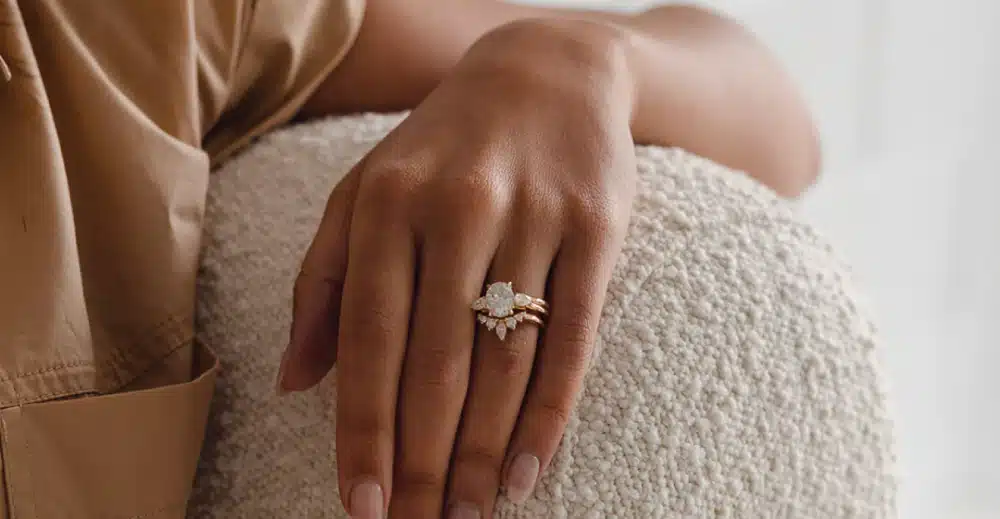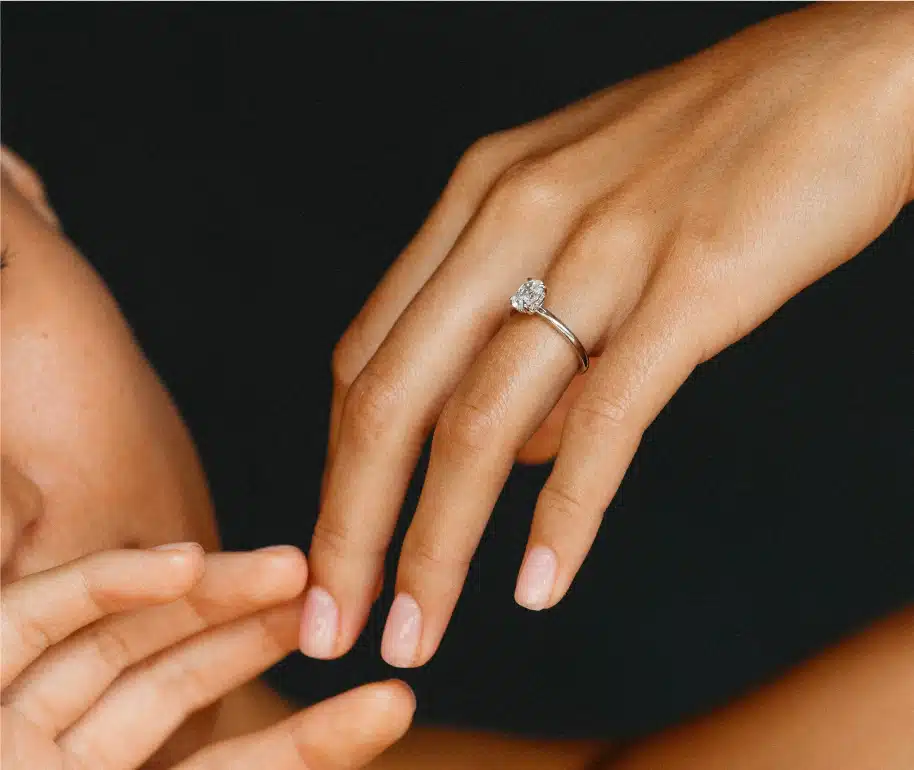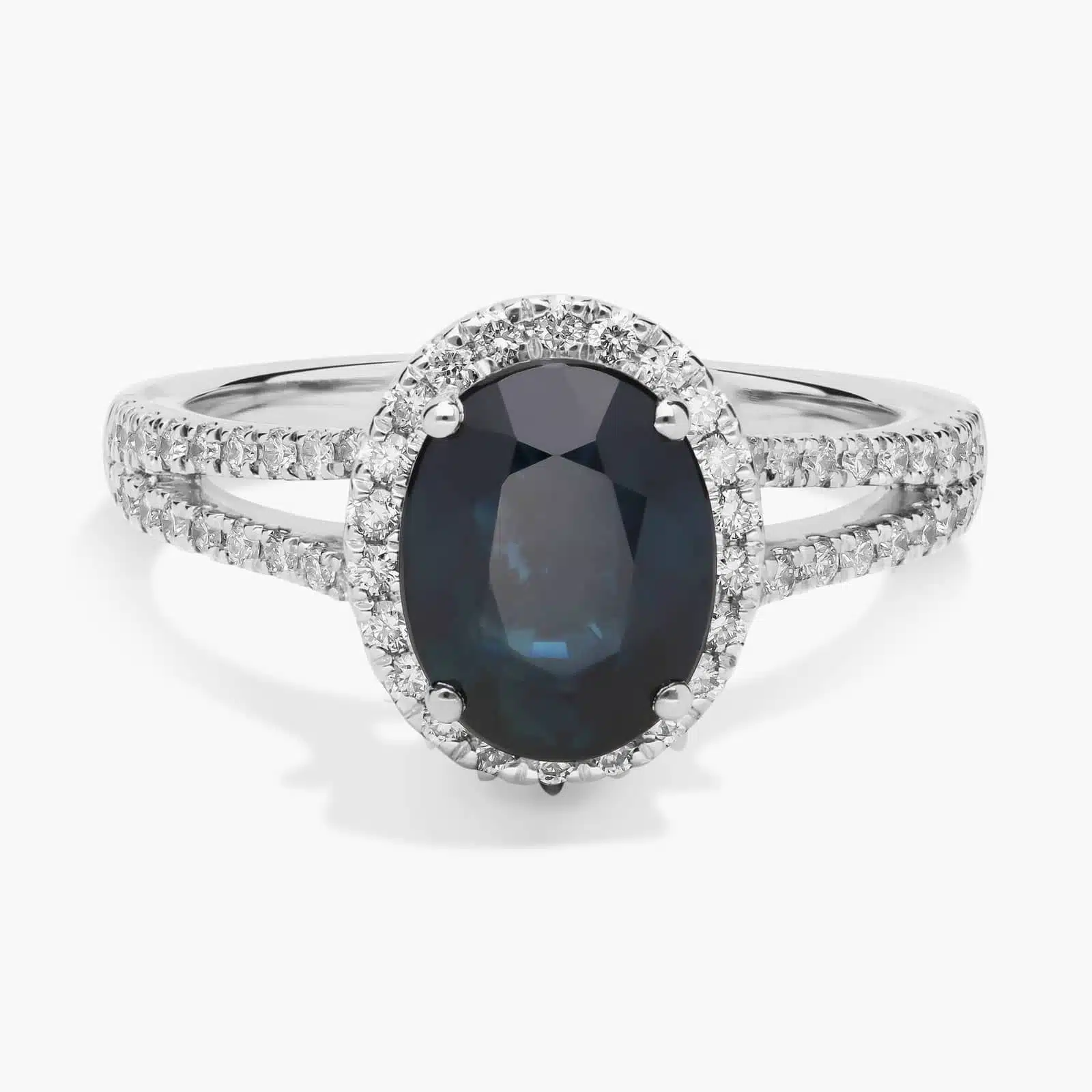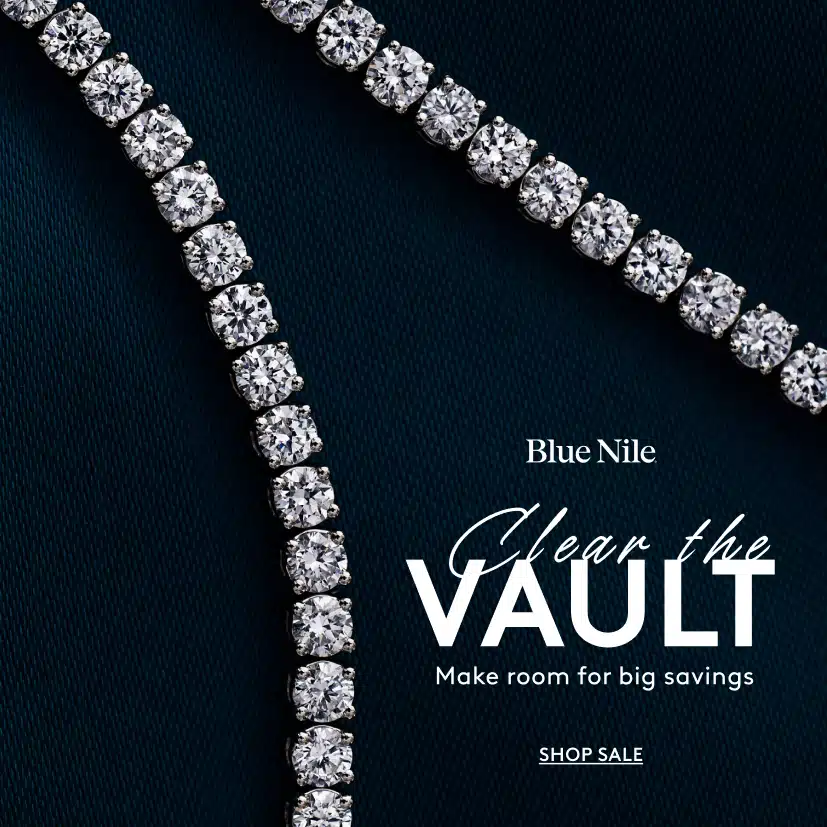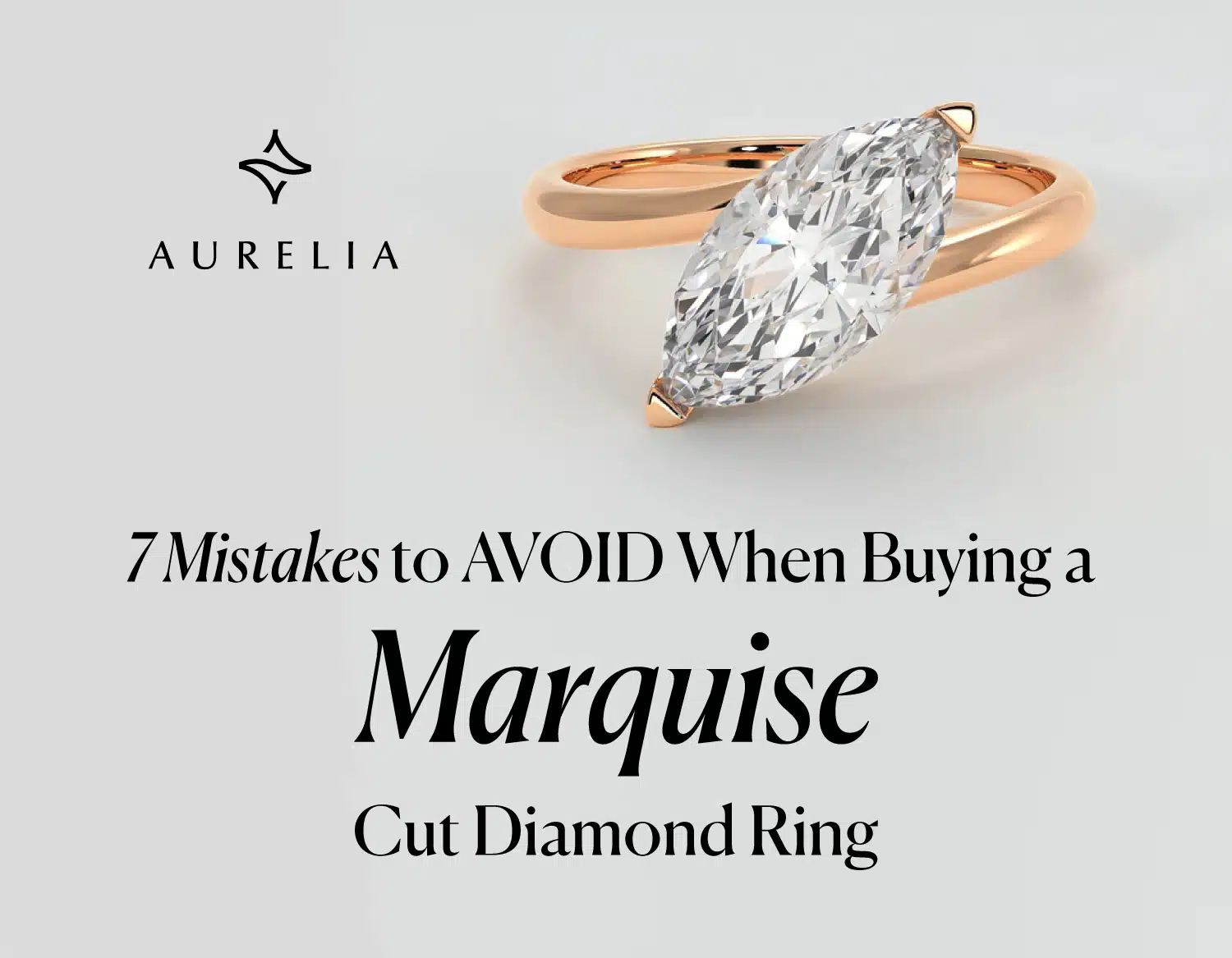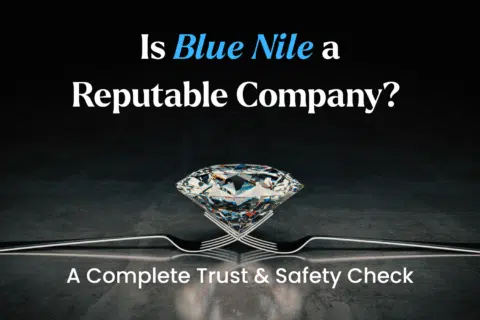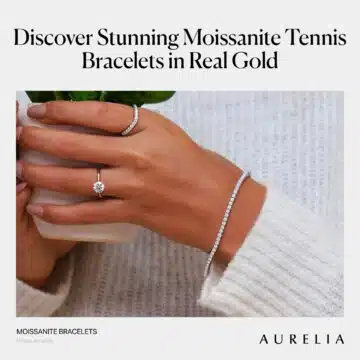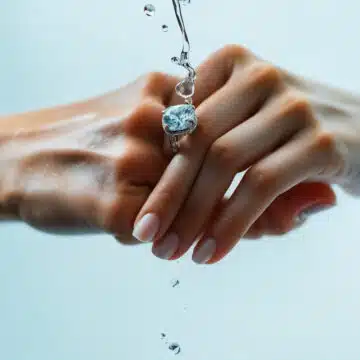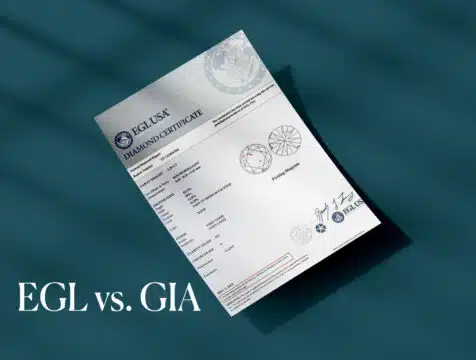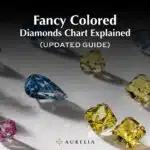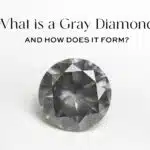The seven biggest mistakes to avoid when buying a marquise cut diamond are: ignoring the prominent bow-tie effect, choosing a stone with poor shape symmetry, selecting the wrong length-to-width ratio, leaving the fragile tips unprotected in its setting, going too low on color and clarity grades, relying solely on a certificate that lacks a cut grade, and buying it sight-unseen without a high-quality video.
Best Deal Of The Year – Final Days
Blue Nile’s “Clear The Vault” is ON.
Shop Fine Jewelry Upto 70% OFF.
*Exclusions may apply. See Blue Nile for complete details.
💍 Limited Time Savings: Forge your perfect engagement ring! Get up to 20% OFF stunning engagement ring settings at James Allen !
✨ Conscious Value: Save more on brilliance! Lab-Grown Diamonds are on sale, with savings up to 10% OFF at James Allen !
You’ve been captivated by the regal, elegant silhouette of the marquise. It’s a choice that is both timeless and daring. But it is also, without a doubt, one of the most technically complex shapes to get right. You’re worried about it looking like a ‘skinny football,’ the dreaded ‘bow-tie’ shadow, and those delicate, pointed tips. How do you find a masterpiece and avoid a costly mistake?
As your friend in the business, I am going to be your brutally honest guide. The marquise is my personal favorite, precisely because a great one is so rare. We are going to walk through the 7 traps that buyers fall into, and for each one, I will give you a clear, powerful solution.
By the end, you’ll be able to choose a breathtaking marquise shaped diamond with the eye of an expert.
What is a Marquise Diamond? The Legend & The Look
Before we dive into the technical details, you need to understand the soul of the marquise cut diamond. This is not just another shape; it is a piece of royal history, a gemstone with one of the most romantic and fascinating origin stories in the entire world of jewelry.
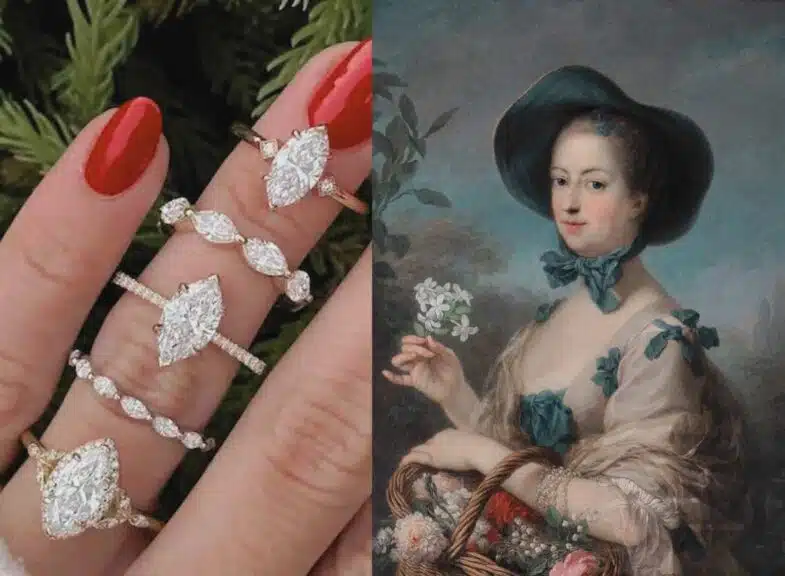
Its story begins in the 18th-century French court with the famous King Louis XV. As the legend goes, the King was so captivated by the beautiful smile of his mistress, the Marquise de Pompadour, that he commissioned a diamond to be cut in the exact shape of her lips.
The result was a stunning, elongated diamond with two sharp points and gracefully curved sides—a cut he named the “Marquise” in her honor. It’s a shape born from a king’s passion.
This is also why you will sometimes hear the marquise referred to by its French nickname, the “Navette,” which means “little boat.” If you look at its silhouette, you can clearly see the elegant, pointed shape of a small ship sailing on the water. It is a cut that is rich with history, drama, and undeniable royal pedigree.
The Marquise Diamond Meaning
So, what does choosing this unique diamond say about you? The marquise diamond meaning is a direct reflection of its bold and royal history.
- A Symbol of Confidence & Individuality: To choose a marquise is to choose a shape that stands apart from the crowd. It signifies a person who is confident, daring, and has a strong sense of their own unique style.
- A Touch of Glamour & Drama: The sharp points and dramatic, elongated shape give it a flair for the theatrical. It’s a cut that feels glamorous and opulent, which is why it has been a favorite of Hollywood royalty for decades.
- A Modern Icon: Today, the marquise shaped diamond has been embraced by a new generation of style icons. A stunning example is Selena Gomez’s marquise engagement ring, which perfectly showcases the shape’s ability to be both timelessly elegant and incredibly modern and chic.
Pros & Cons of the Marquise Shape
Now, as your friend in the business, I need to be brutally honest with you. The very things that make the marquise cut so special are also what make it a technically demanding and challenging shape to buy. Understanding its unique strengths and weaknesses is the first step to choosing a brilliant one.
| The Pros of a Marquise | The Cons of a Marquise |
| Looks Largest of All Shapes | GIA Does Not Assign a Cut Grade |
| Unique & Distinctive Shape | Prominent “Bow-Tie” is Common |
| Excellent Value (15-20% Less) | Two Fragile, Pointed Tips |
| Brilliant Cut Offers Intense Sparkle | Shape Symmetry is Hard to Perfect |
The Mehedi Breakdown: A Deeper Look
Let’s break down what those points really mean for you as a buyer.
The incredible strengths of a marquise are all about visual impact. It has the largest face-up surface area of any diamond cut, which means a 1 carat marquise diamond ring will look significantly larger and more impressive on the finger than a 1-carat round. It’s a “brilliant” cut with 58 facets, so it’s packed with sparkle.
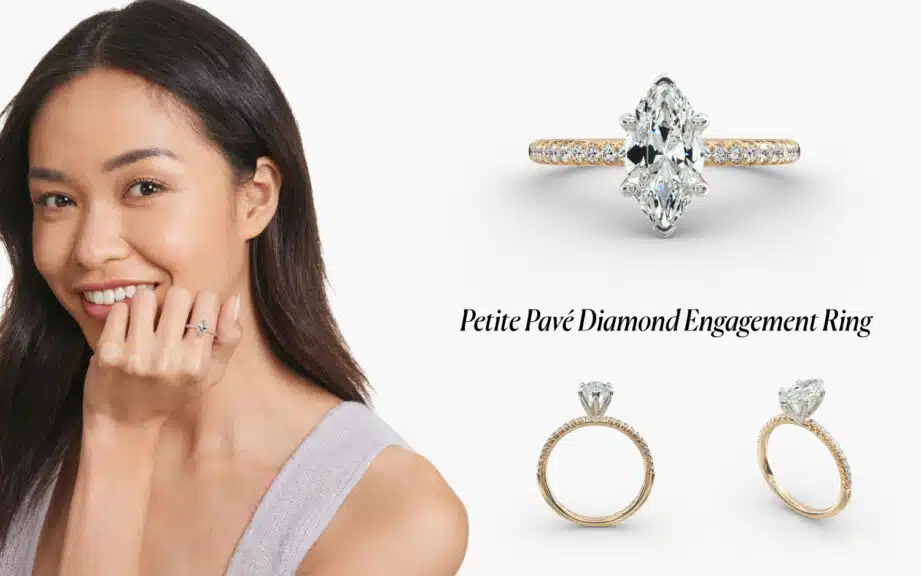
And because it’s a “fancy shape,” it offers excellent value, costing 15-20% less than a round of the same weight. It is, without a doubt, a powerhouse of style and value. For a complete overview of how all the different diamond cuts compare on these factors, our Diamond Shapes Guide is an essential resource.
However, the challenges of a marquise are all technical. As a “fancy shape,” the GIA report for a marquise does not have an overall Cut grade, meaning you can’t rely on the certificate to tell you if it’s brilliant or dull.
It is also prone to a “bow-tie” effect (a dark shadow in the center) and has two fragile tips that must be protected. Finally, its symmetry is incredibly hard for cutters to perfect, and a lopsided stone is a very real risk.
These cons are not meant to scare you. They are the exact reasons that this guide is so important. Now, let’s learn how to solve every single one of these challenges.
The Blueprint: Avoiding the 7 Critical Mistakes When Buying Marquise Cut Diamond
Welcome to the heart of this guide. A perfectly cut marquise diamond is a rare and breathtaking work of art. A poorly cut one… can be a costly and lifelong disappointment. My job is to give you the expert’s blueprint to tell the difference.
We will walk through the seven most common traps that I see buyers fall into every day, and for each one, I will give you a clear, powerful solution.
Mistake #1: Ignoring the Bow-Tie Effect
The Trap: A buyer finds a marquise cut diamond with excellent color and clarity grades on its GIA report and purchases it, assuming it will be brilliant. When the ring arrives, they are devastated to see a prominent, dark shadow running across the center of the stone, a “dead zone” that kills the sparkle.
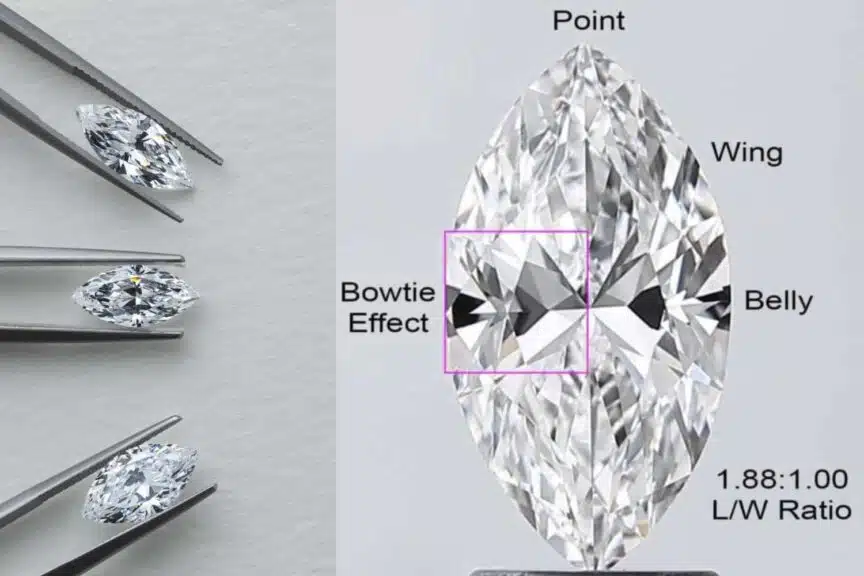
The Harsh Reality: This is the #1 deal-breaker for a marquise diamond cut. The “bow-tie” is not an inclusion; it’s an optical shadow created when the diamond’s facets fail to properly reflect light back to your eye. In a poorly cut marquise, this effect is almost unavoidable.
A faint, flickering bow-tie can be acceptable, but a dark, persistent one that stays black from every angle is a fatal flaw in the diamond’s cut and will always be the first thing your eye sees. The certificate will not warn you about this.
The Mehedi Solution: Your 360° Video is Your Only Tool.
You absolutely must become a “bow-tie hunter” when you are shopping. The high-quality 360-degree video provided by retailers like James Allen and Blue Nile is your single most powerful weapon.
- What to Look For:
- Watch the diamond rotate and tilt.
- Does a dark, bowtie-shaped shadow dominate the center?
- Does it stay dark from every angle?
- What You Want to See:
- A stone that “lights up” across its entire face.
- A bow-tie that is faint, minimal, or completely disappears as the diamond moves.
- Brilliance and sparkle, not a distracting dark pattern.
If the bow-tie is the first and only thing you can see, you must reject the stone and move on.
Mistake #2: Choosing a “Wonky” or Unattractive Shape
This is the second major trap, and it’s all about the artistry of the cut. Unlike a simple circle or square, the complex, asymmetrical shape of a marquise shaped diamond is incredibly difficult to cut perfectly. Many are cut to maximize carat weight instead of beauty, resulting in misshapen, unattractive stones.
The first part of the shape puzzle is its overall silhouette. Is it a graceful, classic shape, or does it look short and “stubby,” or overly long and skinny like a football? This is determined by the Length-to-Width (L/W) Ratio.
| L/W Ratio | Style Description | Mehedi’s Expert Take |
| < 1.75 | The “Stubby” Marquise | Can feel less elegant and lose its finger-slimming effect. |
| 1.85 – 2.00 | The Classic “Sweet Spot” | This is the ideal range for that iconic, graceful, and regal marquise shape. |
| > 2.15 | The “Skinny” Marquise | Can look overly narrow and appear fragile. |
You must decide on your preferred ratio and use the filters on the retailer’s site to narrow your search. This is the first step to avoiding a wide ratio marquise if you prefer a classic look.
This is the expert-level detail that separates a good marquise from a masterpiece. You must look for perfect symmetry.
- The Wings: The two curved sides of the diamond should be a perfect, mirror image of each other. Avoid stones where one “wing” is flatter or fatter than the other. (Please check the above image for clarity)
- The Points: The two pointed ends must align perfectly with each other. If you drew a line from tip to tip, it should run straight through the center of the stone. (Please check the above image for clarity)
A lopsided marquise is a sign of a cutter trying to save a few extra points of carat weight at the expense of beauty. It’s a mistake you can easily avoid by carefully watching the video. For a full breakdown of what makes a shape beautiful, our Diamond Shapes Guide is an essential read.
Read Our 5-Star Blue Nile Review
Check our comprehensive Blue Nile review to learn why we rated Blue Nile 5 stars for their exceptional quality and value.
Mistake #3: Leaving the Two Tips Unprotected
This is a critical, practical mistake that can lead to disaster. The two sharp, pointed ends of a marquise diamond are its greatest structural vulnerability. A diamond is a 10 on the Mohs hardness scale, but it is not indestructible. A hard enough impact at just the right angle can cause those beautiful, sharp points to chip.
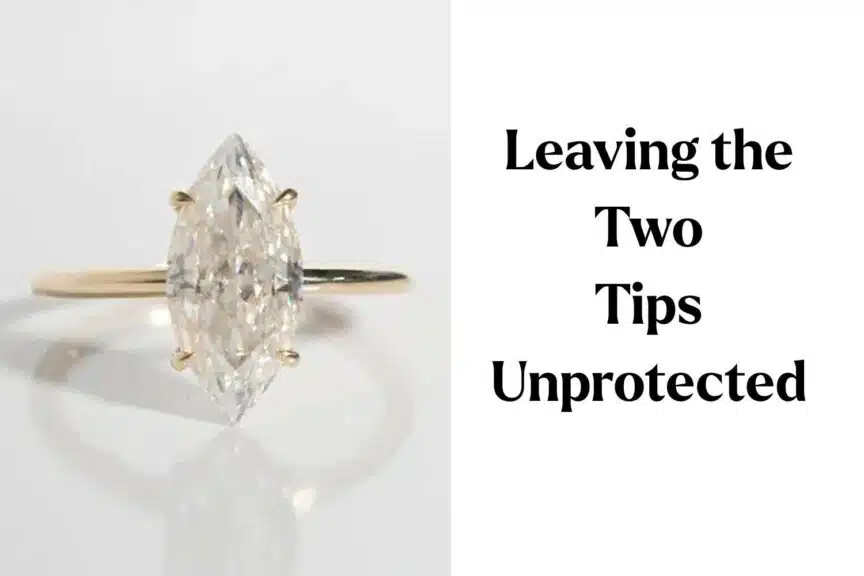
The Mehedi Solution: Your Setting is Your Insurance Policy.
This problem has a simple and elegant solution: you must choose a setting that is specifically designed to protect those two fragile tips. For any marquise diamond ring, this is absolutely non-negotiable.
Your Best Protective Setting Options:
- The V-Prong: This is the most popular and effective solution. The jeweler uses metal prongs grooved into a “V” shape that securely cup and cover each pointed tip, absorbing the force of any accidental impact. A beautiful marquis diamond ring in a V-prong setting from Blue Nile is a classic and safe choice.
- The Bezel: A bezel (or partial bezel) setting that encircles the two points in a thin metal rim offers the maximum possible security. This is a very modern and sleek look.
You should never, ever buy a marquise set in a standard 4-prong setting that leaves the tips exposed. For a stone this valuable, knowing what things are strong enough to break diamonds helps you appreciate the importance of a protective setting.
James Allen: Our 5-Star Choice for Price and Selection
Check our comprehensive James Allen Review to learn more about their pricing and commitment.
Mistake #4: Going Too Low on Clarity
The brilliant facet pattern of a marquise cut diamond is quite effective at hiding small inclusions, or “flaws.” The sparkle can camouflage tiny crystals, clouds, or feathers, especially near the two pointed ends where the facets are most concentrated. However, the center of the diamond can be a larger, more open area where an inclusion can be more noticeable.
The Mehedi Solution: Hunt for an “Eye-Clean” SI1, but VS2 is the Safest Bet.
My baseline recommendation for a stress-free purchase is to aim for a VS2 clarity grade. This will almost always guarantee a diamond that is “eye-clean” (with no flaws visible to the naked eye). However, for the value hunter, the SI1 category is where the true bargains lie.
How to Find a Great SI1:
- You MUST inspect the 360° video.
- Look for inclusions that are small and white/transparent.
- The best SI1 diamonds will have inclusions located near the pointed tips, where they will be completely hidden by sparkle and protected by prongs.
- Avoid any stone with a large, dark crystal in the center of the table.
For a deeper dive into this value-hunting strategy, our complete SI1 Clarity Diamond Guide will turn you into an expert.
Mistake #5: Going Too Low on Color
This is a subtle mistake that is unique to fancy shapes with pointed ends. Like a real teardrop, a diamond’s natural body color has a tendency to “pool” and become more concentrated and visible in its sharp tips.
An H-color grade that looks perfectly icy-white in a round brilliant might show a very faint, but noticeable, warmth in the tips of a marquise cut.
The Mehedi Solution: Choose Your Color Based on Your Metal.
The color of the band will dramatically affect how you perceive the diamond’s color. This is a non-negotiable rule.
Your Marquise Diamond Color Guide:
| Your Metal Choice | Your “Sweet Spot” Color Grade |
| White Gold or Platinum | H Color or Better (G is a great choice) |
| Yellow or Rose Gold | I or J Color |
An H color will look bright and white against the cool tone of a platinum setting. But a J color in a marquise diamond ring yellow gold is a brilliant, savvy buy, as the warmth of the metal will perfectly mask any subtle warmth in the stone. A G Color diamond is a fantastic choice for a white metal setting if your budget allows.
Mistake #6: Relying on the Certificate for Cut Quality
A savvy buyer knows that “Cut is King” and that a GIA report is the ultimate source of truth. The trap is assuming that the GIA report for a marquise tells you the whole story about its cut.
The Harsh Reality: A Marquise Has NO Overall GIA Cut Grade.
The GIA does not assign an overall Cut grade of “Excellent,” “Very Good,” etc., for any fancy-shaped diamond, including the marquise. The certificate is missing the single most important grade.
The Mehedi Solution: Be the Judge.
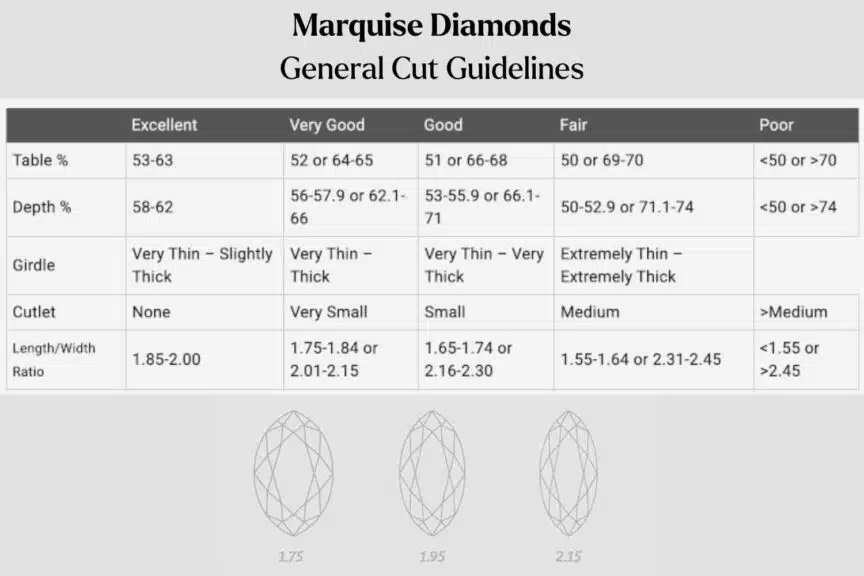
You have to use the certificate’s other data as a starting point, and your eyes as the final judge.
Mehedi’s Expert Starting Point for Marquise Proportions
- Table %: 53% to 63%
- Depth %: 58% to 62%
- Polish & Symmetry: Insist on “Excellent” for both. In a marquise, with its long, clean lines, symmetry is critical.
- Culet: “None” is ideal.
These numbers will help you filter for high-potential stones, but the final test is always the visual one. A deep understanding of these reports is key, and the difference between labs like GIA and HRD Diamond Certification is a testament to why we stick with the best.
Mistake #7: Buying It “Sight Unseen”
This final mistake ties all the others together. A buyer, feeling confident with a GIA report that shows a G color, VS2 clarity, and excellent polish/symmetry, buys a marquise diamond from a site that only provides a stock photo.
The Harsh Reality: This is the riskiest shape to buy blind. As we’ve just learned, the certificate will not tell you:
- If the stone has a severe bow-tie.
- If the wings are lopsided or the points are uneven.
- If the L/W ratio creates a shape that you personally find beautiful.
- If the light performance is brilliant or dull.
The Mehedi Solution: High-Quality Video is Your Non-Negotiable Lifeline.
You MUST buy your marquise shaped diamond from a vendor who provides high-resolution, 360-degree videos of every single stone. It is your most powerful tool. It is your virtual jeweler’s loupe, and it is the only way to be a confident and protected buyer.
This is why I so consistently recommend online retailers like James Allen and Blue Nile. For an insider’s look at why their technology is so crucial for buying complex fancy shapes, our article on things to know about James Allen before you buy is a must-read.
Are Round Diamonds More Valuable Than Marquise Diamonds?
Yes, from a pure price-per-carat perspective, round diamonds are significantly more valuable (and therefore, more expensive) than marquise diamonds. This is one of the marquise cut’s most incredible advantages.
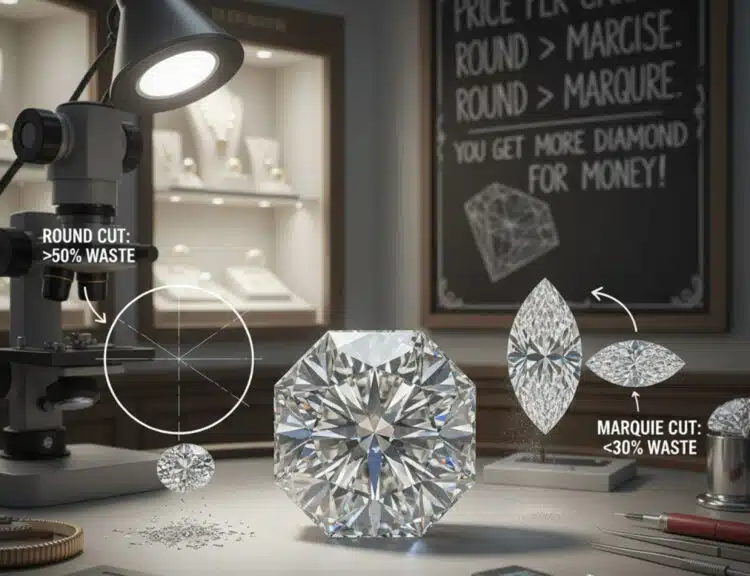
For a stone of the same carat weight, color, and clarity, you can expect a marquise cut diamond to cost anywhere from 15-20% less than its round brilliant counterpart.
This major price difference isn’t arbitrary; it comes down to a simple principle in diamond cutting called “yield from rough.” Here’s the secret:
- A raw, unpolished diamond crystal is typically an octahedral shape, like two pyramids stuck together at the base.
- To cut a perfect circle (a round brilliant) from this squarish crystal, a cutter has to grind away a massive amount of the original material, often losing more than 50% of the crystal’s weight.
- The elongated marquise shape, however, can be planned along the crystal’s natural length. This allows the cutter to preserve far more of the original carat weight.
This higher “yield” means less waste, and that cost savings is passed directly on to you. When asking how much is a marquise diamond worth, you have to start with the understanding that its inherent value is fantastic.
Diamond IQ Test: Natural or Lab-Grown?
Two identical diamonds: GIA Certified, 1.51ct, D Color, VVS1, Ideal Cut. One is natural ($16,530), the other is lab-grown ($2,390). Choose the diamond you like better and see if you can match it to its origin.
The importance of a diamond’s “worth” versus its retail price is a crucial concept, one we explore in detail in our guide on the definition of an appraisal for a diamond ring.
To give you a realistic idea, here is a sample pricing table for a high-quality, GIA-certified natural marquise cut diamond, using our “sweet spot” recommendations of H color and eye-clean VS2/SI1 clarity.
| Carat Weight | Typical Price Range | Mehedi’s Expert Take: The Value You’re Getting |
| 1.00 Carat | $4,000 – $5,200 | A stunning one carat marquise diamond ring for an exceptional price. |
| 2.00 Carat | $13,000 – $18,000 | A breathtaking 2 carat marquise with major finger coverage and sparkle. |
| 3.00 Carat | $29,000 – $42,000+ | The ultimate 3 ct marquise diamond; a true luxury piece at a savvy price. |
A perfect real-world example of this incredible value is a beautiful 1.21 Carat, H Color, VS1 Clarity marquise from James Allen. When you see its visual size and sparkle for its price, you understand the power of this shape.
The Marquise Diamond Size Chart
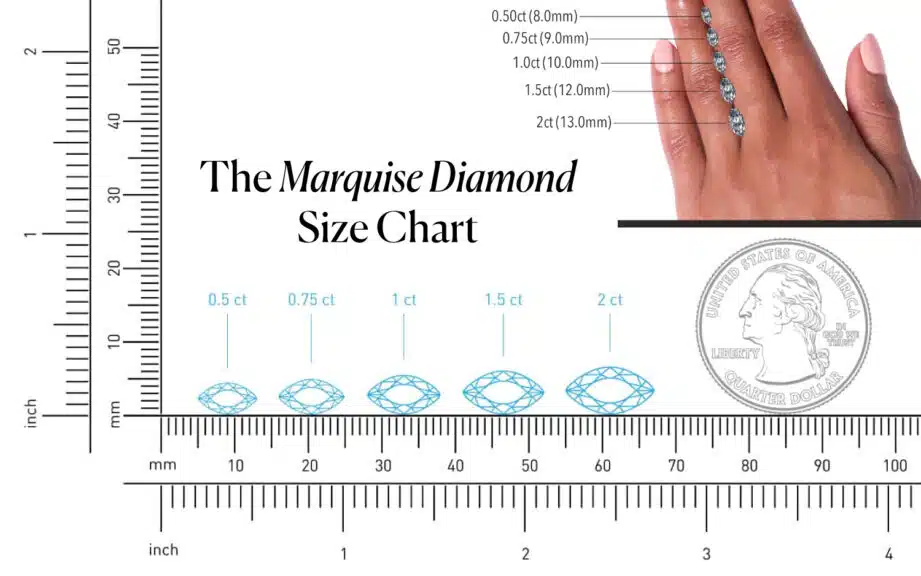
Now we come to the marquise cut’s true superpower. Remember our golden rule: carat is a measure of WEIGHT, not of visual size. The way a diamond looks on the finger is all about its surface area, or “spread.”
The marquise diamond shape has the largest face-up surface area of any diamond cut, period. Its long, slender silhouette and pointed ends create a massive “spread” that simply covers more of the finger.
- A 1-carat marquise has about 15% more surface area than a 1-carat round.
- This creates a powerful optical illusion, making it look significantly larger than its actual carat weight.
- The elongated shape also has a very flattering effect, drawing the eye up and down and making the finger appear longer and more slender.
This is the ultimate win-win. You pay less per carat, and the carat you buy looks bigger. It’s no wonder the marquise is a favorite of savvy buyers. For a full breakdown of how all the shapes stack up, you must have our guide on what shape diamond looks the largest open in another tab.
Here is your marquise diamond size chart mm to help you visualize the real-world measurements (length x width) you can expect for a well-proportioned marquise.
| Carat Weight | Approx. Size (Classic L/W 1.90) |
| 0.75 ct. | 8.5mm x 4.5mm |
| 1.00 ct. | 10.0mm x 5.0mm |
| 1.50 ct. | 11.0mm x 5.8mm |
| 2.00 ct. | 12.5mm x 6.5mm |
Look at that 1-carat mark. A full 10mm in length is a massive visual statement on the finger, far larger than the ~6.4mm diameter of a 1-carat round. A great real-world example of this is this stunning 1.01 Carat, G-VS2 Marquise from Blue Nile, where you can see the impressive spread and incredible sparkle come to life.
The Best Marquise Diamond Settings
You’ve done the hardest part: you have found your perfect, symmetrical, bow-tie-free marquise diamond. Now for the incredibly exciting final step: choosing its forever home. For a marquise stone, the setting is not just about style; it is the non-negotiable guardian of its two delicate, pointed tips.
As we discussed, those points are the diamond’s single greatest vulnerability. This is where we solve that protection problem with style. Let’s walk through my top three recommended settings for a marquise diamond, each one a perfect marriage of beauty and security.
The Solitaire Setting: Timeless & Confident
The marquis diamond ring solitaire is the quintessential choice for the purist, the person who believes the diamond’s dramatic, regal shape should be the one and only star of the show.
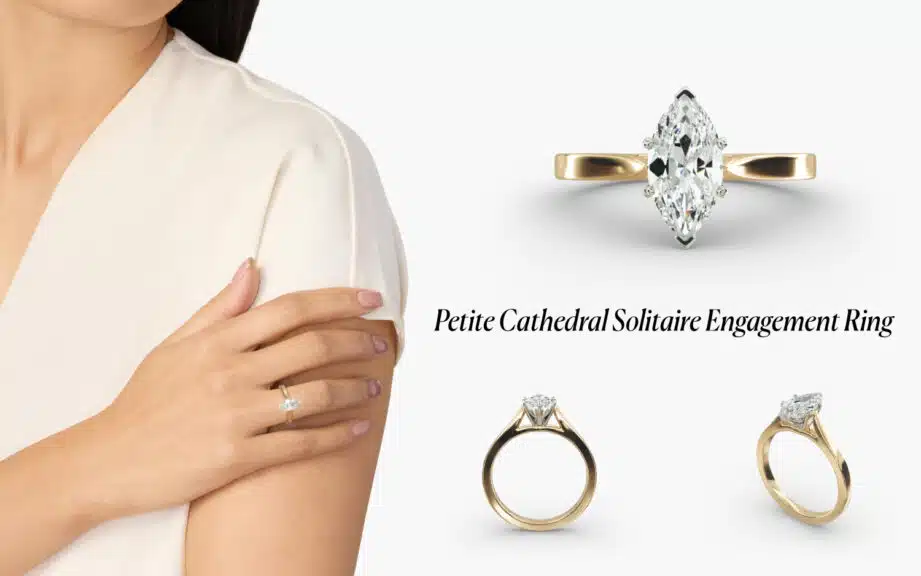
This style is the definition of classic elegance. A simple band lifts the diamond marquise cut up to the light, leaving it open and exposed to maximize its brilliance. It is a supremely confident look that is utterly timeless and allows the unique, elongated silhouette of the diamond to make the full statement.
Best Deal Of The Year – Final Days
Blue Nile’s “Clear The Vault” is ON.
Shop Fine Jewelry Upto 70% OFF.
*Exclusions may apply. See Blue Nile for complete details.
Here is the most critical piece of advice I can give you for a solitaire setting: you absolutely MUST choose one with “V-prongs” (or V-tips).
- The Mistake: A standard 4- or 6-prong setting for a round diamond will leave the pointed tips dangerously exposed.
- The Solution: V-prongs are special metal claws that are grooved into a “V” shape. They securely cup and shield each of the marquise’s two tips, absorbing the force of any accidental impact.
Never, ever buy a solitaire setting for a marquise that does not have V-prongs.
For a flawless execution of this style, look no further than a stunning 6-Prong V-Tip Solitaire Engagement Ring from James Allen. It offers the perfect combination of classic beauty and expert, essential protection for your marquise stone.
The Halo Setting: Glamorous & Secure
If your goal is to maximize the sparkle and the visual size of your marquise diamond, the halo setting is an unbeatable choice.
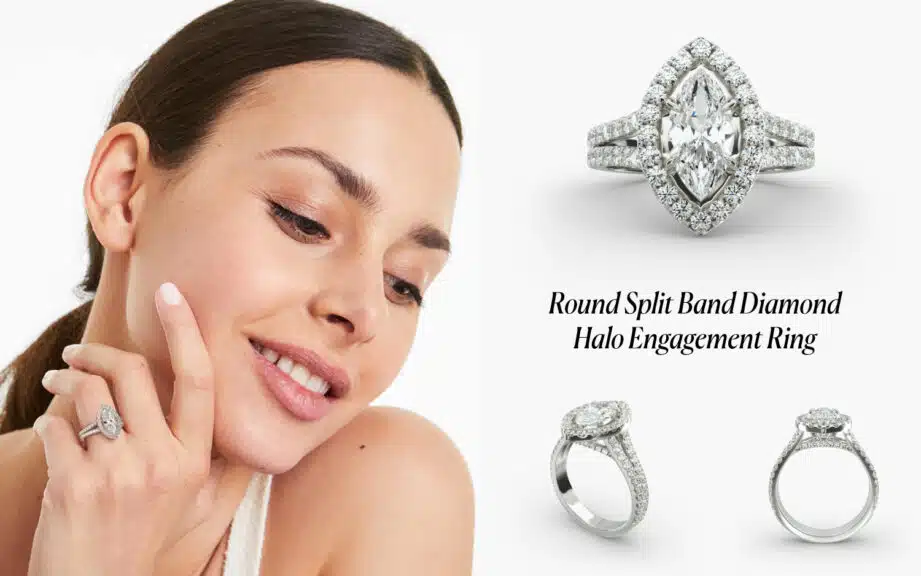
This style is for the lover of high-octane glamour. The halo consists of a ring of tiny, brilliant pavé diamonds that perfectly traces the outline of your center stone. This creates a seamless, breathtaking surface of continuous fire and brilliance, transforming the ring into a true showstopper.
- Makes the center stone look significantly larger.
- Adds an immense amount of extra sparkle.
- Beautifully accentuates the regal marquise outline.
A halo setting is also a fantastic choice for security. That entire frame of tiny diamonds acts as a natural “bumper” or “airbag” for your center stone. It creates a protective perimeter that shields not just the two tips, but the entire girdle of the diamond from the hardest knocks of daily life. For a precious 1 carat marquise diamond, this is a fantastic and beautiful form of insurance.
To see how spectacular this looks, a beautiful Halo Diamond Engagement Ring from James Allen showcases the glamour and security of this style perfectly.
The East-West Setting: Modern & Chic
For the fashion-forward individual who wants a truly unique and unexpected look, the East-West setting is a modern masterpiece.
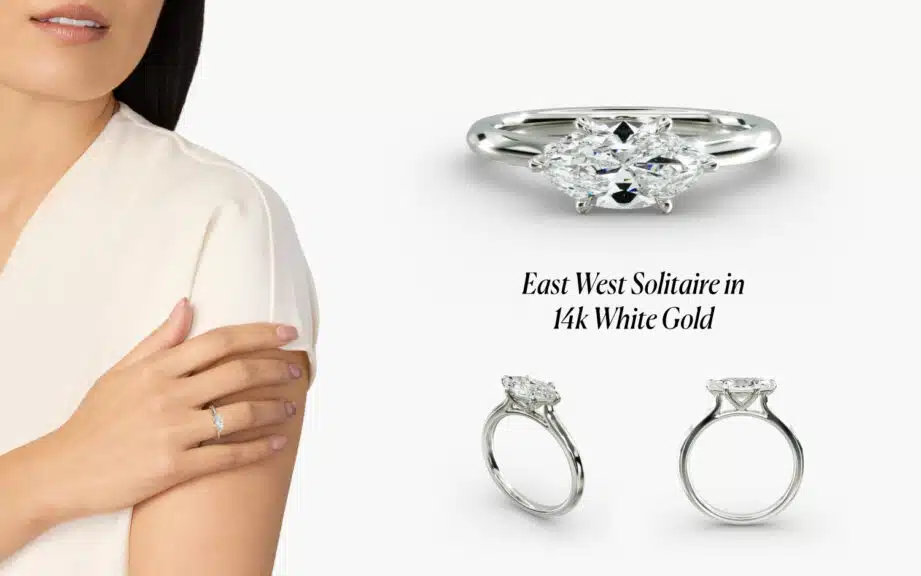
This style takes the traditional, vertically-oriented marquise diamond and flips it on its side, setting it horizontally across the finger. This simple rotation completely transforms the ring’s personality, creating a chic, modern, and slightly edgy look that is incredibly stylish.
It’s a fantastic way to make even a one carat marquise diamond ring feel like a major fashion statement.
- Unique, modern, and unexpected style.
- Creates the illusion of a wider, “stackable” band.
- Highly praised by top jewelry designers.
The East-West setting is also inherently very secure. Because the two vulnerable tips are tucked in against the sides of the finger, they are naturally shielded from the head-on impacts that are most likely to cause chipping. It’s a style that is both fashionable and incredibly practical.
The variety of marquise diamond ring settings is vast, but this modern orientation is a favorite among designers.
For a look at how incredibly chic this orientation can be, a stunning East-West Comfort Fit Solitaire from Blue Nile is the perfect benchmark for modern elegance and intelligent design.
Your Marquise Cut Diamond Ring Questions, Answered
You’ve got the expert blueprint for avoiding the common mistakes. Now, let’s dive into the specific questions that every savvy buyer has before making their final decision. Here are my direct, honest, and in-depth answers to everything you need to know about the incredible marquise cut diamond.
The Verdict: A Shape for the Bold and the Beautiful
The marquise diamond is a breathtaking choice, but it is a connoisseur’s cut that demands a careful, expert eye. Its beauty is a direct result of the cutter’s artistry, something you simply cannot read on a certificate.
By avoiding these 7 common mistakes, you have moved from a regular customer to an informed expert. You now have the knowledge to judge its graceful symmetry, protect its delicate points, and find a stone that is a perfect and dramatic symbol of your love. Buy it with knowledge, and wear it with confidence.
Continue Your Research Journey
You are now an expert on the beautiful and regal marquise diamond, armed with the insider knowledge to find a truly spectacular one. If you’re ready to take the next step and dive deeper into the world’s top retailers, advanced diamond characteristics, or practical buying tools, these hand-picked guides are the perfect next chapter.
The In-Depth Retailer Reviews
- Our #1 Recommended Retailer: The Ultimate James Allen Review – (https://moissanitebyaurelia.com/james-allen-review/)
- The Industry Heavyweight: The Complete Blue Nile Review for 2024 – (https://moissanitebyaurelia.com/blue-nile-reviews-2024/)
- Another Head-to-Head Battle: Brilliant Earth vs. James Allen Compared – (https://moissanitebyaurelia.com/brilliant-earth-vs-james-allen/)
Advanced Diamond Knowledge
- The Foundation: Our No-Nonsense Diamond Grading Chart (The 4 Cs) – (https://moissanitebyaurelia.com/diamond-grading-chart-4-cs-of-diamonds/)
- Understanding Super-Ideal Cuts: Hearts and Arrows Diamonds: What GIA Reports Don’t Tell You – (https://moissanitebyaurelia.com/hearts-and-arrows-diamonds/)
- A Deep-Dive on Clarity: What is the Best Diamond Clarity for Value? – (https://moissanitebyaurelia.com/what-is-the-best-diamond-clarity/)
Practical Guides & Strategies
- Your Next Actionable Step: A Step-by-Step Guide to the Blue Nile Creative Studio – (https://moissanitebyaurelia.com/blue-nile-creative-studio/)
- Considering a Modern Alternative?: An Expert Guide to the Types of Lab-Grown Diamonds – (https://moissanitebyaurelia.com/types-of-lab-grown-diamonds/)
- Get a Price Check: The Aurelia Diamond Rate Calculator – (https://moissanitebyaurelia.com/diamond-rate-calculator/)


